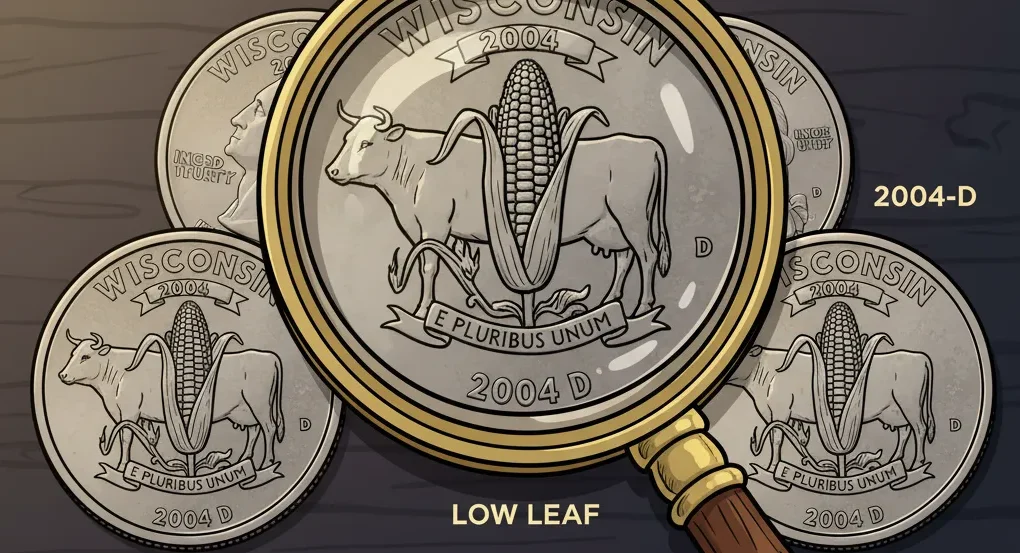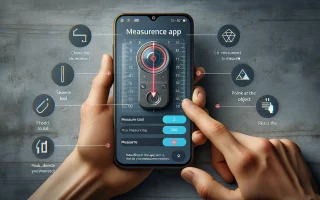All the United States Quarter Dollar coins, released in the State Quarters program from 1999 to 2008, also including 2009 coins, are made from clad material with a copper core.
And as you know, coins with defects can cost the most, so it makes sense that people are looking for all state quarter errors with pictures.

Errors and Varieties with Doubled Die Varieties
Die doubling happens when the working die gets the image hit many times with a small unwanted move between the hits — this results in the coin having a double raised part.
Doubled Die Obverse DDO
Obverse doubling shows up on parts that are the same across the whole coin series.
DDO on the Motto “IN GOD WE TRUST”
Location: The motto “IN GOD WE TRUST” to the left of Washington’s face
Description: Doubling shows up as an extra raised part, making the letters’ edges wider. The move can be flat or diagonal. The most visible doubling is seen on the flat cross-parts of the letters ‘T’, ‘R’, ‘S’. The fault happens with a small move of the working die during the image application. This DDO type is seen on coins from many years of the program.
DDO on the Date
Location: The four numbers of the striking year
Description: Doubling shows up as a thick raised part on the numbers, often with a flat or shelf-like move. A clear extra edge is seen along the bottom or top edge of the numbers.
For example, on numbers ‘1’ and ‘9’, the move looks like a parallel line next to the main raised part.
Doubled Die Reverse DDR
Reverse doubling is different for each state, as the reverse has a special image.
DDR on the State Name and Release Date
Location: The full name of the state and the coin’s release year
Description: Doubling shows up on the large capital letters of the state name and the date numbers. The move is often straight up-and-down or turning — a double edge is seen on the up-and-down and flat parts of the letters.
The doubling is caused by the working die moving during its process.
DDR on State Design Parts
Location: Buildings, plants, or figures special to the state’s design
Description: A double raised part is seen, showing up on thin lines of the drawing.
For example, on the Virginia state coin, DDR can be seen on the ship’s lines, and on the New York state coin, on building parts, the relief move is often diagonal.
Errors from Die Faults Die Damage Errors
These errors come from the working dies being worn, broken, or hitting each other during striking.
Die Breaks
Location: Any part of the coin’s raised part or field
Description: A die break is a crack on the working die’s surface, with the blank’s metal filling the crack under pressure.
On the coin, the break looks like a raised line or strip, cracks can join letters, go across the picture, or run from the rim to the coin’s center.
Cuds on the Rim
Location: The coin’s rim and the field next to it
Description: A Cud is a large, oddly shaped fault, being part of the coin made by metal filling the place where a big piece of the working die broke off, including its rim.
On the coin, the Cud looks like a smooth, not-engraved, thick lump, crossing the rim. Cuds often happen on the top or bottom of the coin, their size changes from small to large, covering much of the picture.
Die Clash
Location: The coin’s field on the obverse and reverse
Description: Clash happens when the top and bottom dies hit each other with no coin blank between them, the raised part of one die presses a faint, flipped image onto the other die’s surface.
On the coin, this looks like a weak, flipped, pressed-in mark of the opposite side’s parts.
For example, on the obverse, one can see faint outlines of the eagle or state name, and on the reverse, faint outlines of Washington’s face.
Errors from the Blank and Striking Process Striking and Planchet Errors
These errors are about faults in the coin blank itself or wrong coin placed in the press.
Off-Center Strike
Location: The whole coin
Description: Striking happens when the blank is placed wrongly in the holding ring. The image is struck off-center.
Part of the coin’s image is missing, and in its place, one can see the smooth, not-struck field of the blank.
The move level is shown as a percent from 10 to 90. With a big move, part of the words and date may be fully off the coin.
Broadstrike
Location: The coin’s rim and width
Description: Striking happens with no holding ring or when the ring is broken, the blank’s metal is not held back, and the coin gets wider in size, becoming thinner than normal.
A main sign is the lack of grooves and a stretched, weak raised part near the edge, the picture may look stretched and less clear.
Clipped Planchet
Location: The coin’s edge
Description: This error happens during the cutting of blanks from the metal strip, a part of the coin’s edge is missing, having a clear cut shape.
- Straight Clip: A straight cut, coming from the metal strip’s edge.
- Curved Clip: A half-round cut, happening when the blank partly enters the hole left by the last cut blank.
Lamination Error
Location: The coin’s surface
Description: This is about a bad bond of the clad metal layers. The outer nickel-copper layer peels away from the inner copper core.
On the coin, one sees bubbles, cracks, or open areas of the copper core, peeling could happen before or after the strike.
If the peeling happens before the strike, the die’s engraving is pressed right into the bare copper core.
Missing Clad Layer
Location: The coin’s surface
Description: The coin is struck on a blank with one or both outer nickel-copper layers missing from the start, has a copper or reddish color on the side where the clad is missing.
Multiple Strike
Location: The coin’s surface
Description: Each next strike moves from the one before, causing many images to be on top of each other.
On the coin, one sees overlapping faces, words, and dates.

Most Known Specific State Quarters Errors
Extra Leaf Wisconsin Quarter 2004-D
Location: The reverse of the 2004 Wisconsin state coin, near the corn cob
Description: This fault happened from the working die being damaged or dirty — the unwanted raised part formed as foreign material filled the die, being later removed or changed. Two clear types of this error are seen.
- Low Leaf: The raised part sits lower and touches the base of the corn cob. The part looks like a leaf edge, but its cause is die damage
- High Leaf: The raised part sits higher on the corn cob, not touching the base. This part is closer to the cob’s middle. It is also a result of a die fault
Double Die Kansas Quarter 2005-P
Location: The motto “IN GOD WE TRUST” on the obverse
Description: Doubling shows up as an extra shelf along the top and left edges of the letters.
Most clear on the letters ‘T’, ‘R’, ‘U’ in “TRUST” and on ‘I’, ‘N’ — doubling is caused by the die moving when the image was put on many times.
Double Die Colorado Quarter 2006-P
Location: Words on the reverse and mountain picture parts.
Description: Doubling is seen on the word “COLORADO”, and also on the year numbers.
- Letters showing the fault: A clear shelf effect is seen on the flat and up-and-down parts of the letters, especially on ‘R’, ‘A’, ‘D’ in the state name.
- Picture showing the fault: Double raised part is seen on the edges of the mountain tops.
Nevada Quarter Errors 2006-P
Location: Different parts of the reverse
Description: The Nevada state coin often has many small Die Breaks running across the raised part and the field.
Also, strong doubling is seen on the word “THE SILVER STATE” — these faults are from the working die wearing out fast, caused by the coin’s raised part design.
Pennsylvania Quarter Errors 1999-P and 1999-D
Location: Reverse, field near the face
Description: On the obverse field, to the left of Washington’s face, one sees faint, pressed-in marks of the tower and words from the reverse.
On the reverse, one may see unclear marks of Washington’s face.
Die Wear and Fill Errors
These errors come from foreign material building up or the working die wearing out too much.
Struck Through Die Fill
Location: Any small details and letters
Description: On the coin, this shows up as a missing or very weak raised part in the area where the material was on the die.
The fault often touches small parts, like pieces of letters or date numbers, looking incomplete or “filled in”.
Die Polishing
Location: The whole coin surface
Description: This shows up as smooth, incomplete or weak small details, like Washington’s hair, thin lines on the state picture, or small marks on the letters.
If you spend at least 15-20 minutes a day looking at and analyzing each variation of coins and their errors, you will not notice how confident you will feel at auctions and how this will affect your viewing and numismatic expertise.




